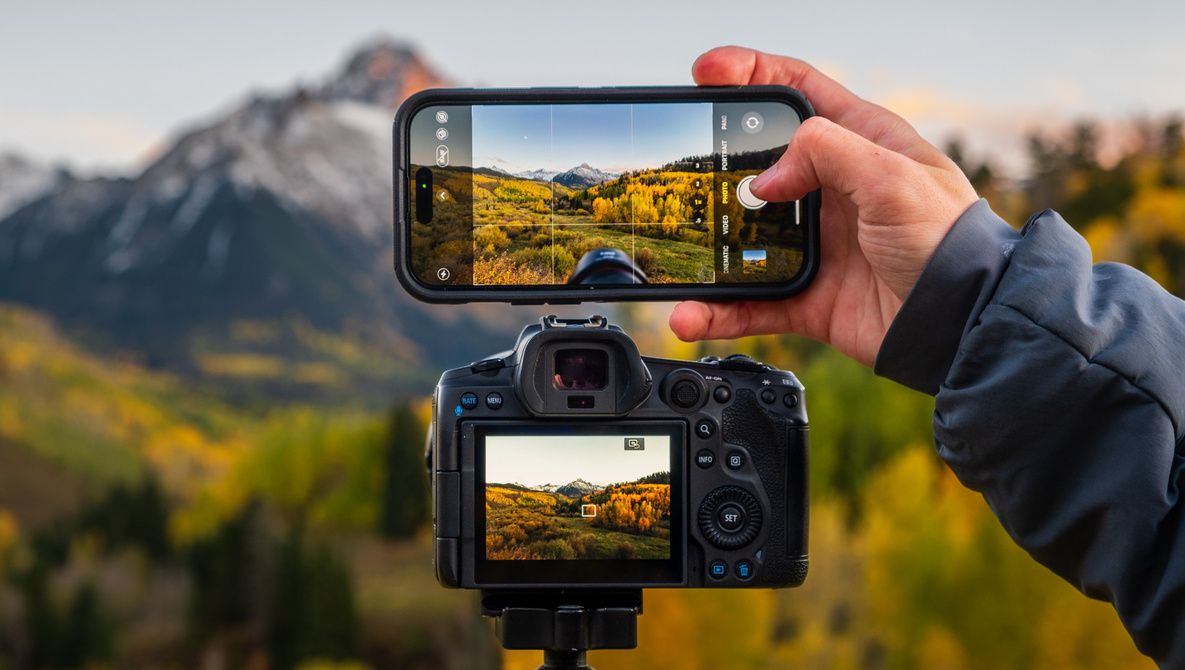The funny thing about the best and the worst smartphone flagship camera of 2022 is that… they’re the same camera. The iPhone cameras are, and have always been, crowd pleasers. In fact, it’s not really a stretch to call the full iPhone package a crowd-pleaser. They’re hyper-successful, extremely user-friendly, and they even score pretty high on independent benchmarks. And yet, few people who pay much attention at all to the state of mobile tech would go very far out of their way to note the iPhone camera as an especially great camera, especially if they’re familiar with the practical, real-world results – that is, the actual pictures that people are out there taking with their new iPhones.
Although a lot of the big buzz surrounding last year’s new iPhone 14 lineup centered around the so-called “disappearance” of the infamous notch in favor of an admittedly pretty decent stop-gap measure that Apple are optimistically calling the “dynamic island” – evoking images of a spot of useful space in the middle of a sea of screen to avoid reminding consumers that, in spite of its often interesting functionality, most of this “island” is uninhabitable. That is to say, you can move the notch down, call it something else, and add features to it, but a notch is a notch is a notch. Is it better than the last-gen notch? Certainly. And by miles. But it’s unsurprising that many people are holding off on upgrading when these new flagships have such obvious room for improvement. Everyone can readily envision the iPhone of the future, notchless, USB-C capable, and, frankly, packing a few features that other manufacturers have had for a couple of years by now. But one of the ways that the iPhone 14 markedly improved on previous generations is in the specs of the camera.
With a wider aperture, larger sensor, and even an improved selfie camera, it seemed, on paper, like the iPhone 14 would delight photography hobbyists, prosumers, and the Tik Tok generation alike. But when we finally got our hands on these things the pictures were kind of… samey, right? There are even a few situations, with certain lighting conditions or compositional arrangements, in which I’m pretty sure a 13 pro would have performed better than this 14 pro. Which means, that although it’s technically accurate (if not a little bit silly) for Apple to come on stage and tell us that this is “the best camera yet in an iPhone,” if people are out there upgrading their devices (which is not cheap to do regularly) on the promise of a better camera, only to realize that the camera is only technically better, and the actual results in the real world are usually about the same, that’s going to leave a lot of iPhone fans disappointed. Majorly disappointed. If the average consumer can’t notice a “jump” in processing power, or image quality, or battery size, then they will have no reason to upgrade. And, if they do upgrade, they will have no reason to be satisfied with their decision. Not great news for apple, who bank (literally) on customer loyalty and the expectation that their customers will upgrade regularly… often annually…
Luckily, a lot of those who upgraded last year will still surely be happy about the most ostensible change, the dynamic island. Not only is that a more obvious, although still iterative, improvement, it’s also one of those great neon signs that lights up and says “hey, everyone, I have the newest iPhone!” Just like the jet black iPhone 7 (which was really just a fingerprint magnet), or the vertical camera bump, or the triple rear-camera array. The thing is, however, it’s actually possible to get a lot more out of the 14 pro camera than most people realize. The sensor and lens are better, in no uncertain terms. It’s the software processing that sort of overdoes it and washes out any technological gains. Don’t get me wrong, image processing is a huge part of why flagship cameras are as good as they are. Before this generation, the iPhone was still able to improve camera performance across the board by using software to squeeze more and more out of the same optics and sensors as used in the previous generations. But now that the sensors are much larger and more capable, and now that the physical optics of the camera mean that more light-data is reaching the sensor in the first place, it almost seems like the iPhone 14 is overdoing it on image processing to produce some frankly unimpressive results. Luckily, there’s a way around this.
Since the iPhone 12 Pro (and since iOS 14.3), pro-model iPhones have been able to shoot a version of RAW that Apple are (of course) insisting on calling ProRAW. Still, that means that, although somewhat buried in the options and settings, 14 pro owners are able to actually get way more out of their new phone cameras than what it gives you right out of the box. By going to the settings app, scrolling down to the camera settings, and then opening up the format options, you can switch on ProRAW and shoot up to 48-megapixel images. While you will have to go into lightroom, or similar, to fine-tune and make the best use of that added data, if you do, you’ll end up with some of the best-looking photos that any flagship smartphone of 2022 is capable of producing. Which is why the iPhone 14 pro has the best and the worst camera of 2022 flagships.

